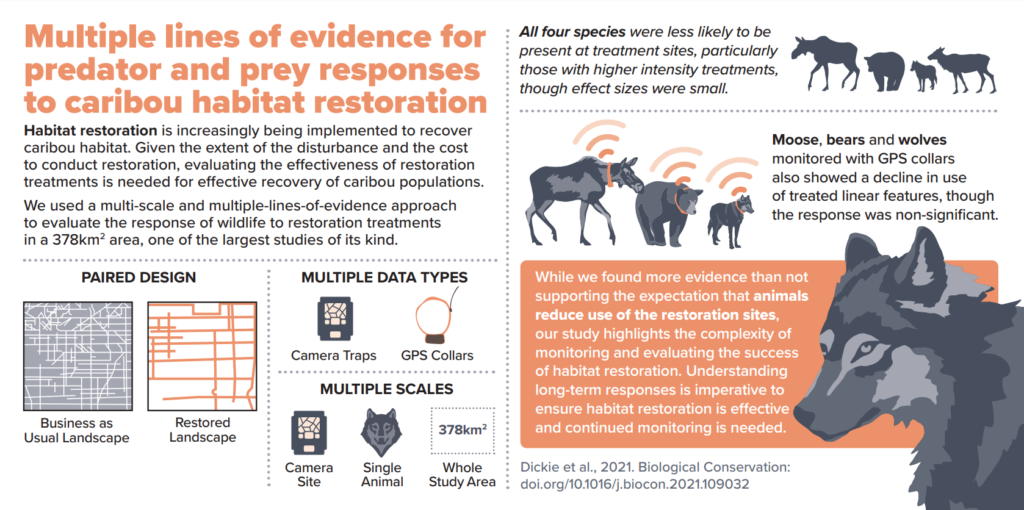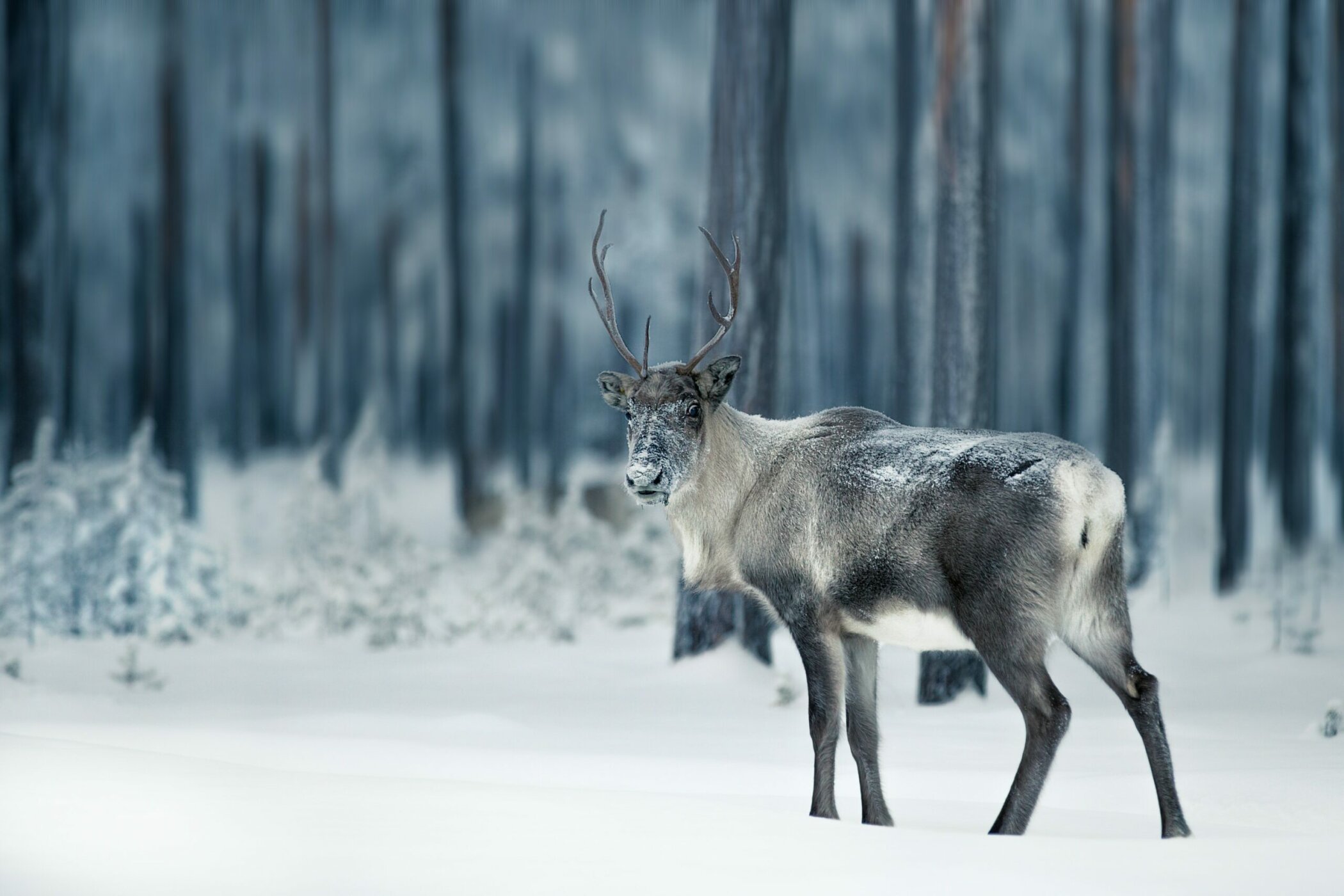Humans have altered the forests of western Canada through harvesting forests, extracting oil and gas, and creating linear features (roads, seismic lines, pipelines, etc.) to access these resources. Linear features create “highways” through the forest for predators like wolves, which is hypothesized to increase their hunting efficiency. By moving faster and farther, wolves can shrink their home ranges. If they can find their prey more efficiently, they in turn need less space to make a living. This means that more wolf packs can “fit” into an area. Linear features also increase wolf and bear use of peatlands, which caribou use as refuge to space away from predators and apparent competitors. Moose and caribou, on the other hand, tend to perceive linear features as “risky”.
Restoration has been highlighted as a key caribou recovery action, and efforts have begun to ramp up in recent years. The goal: reduce predator and prey use of linear features, and slow them down while they are on them. The Wildlife Science Centre has worked with industry partners at the Regional Industry Caribou Collaboration and Cenovus Energy to test restoration effectiveness.

